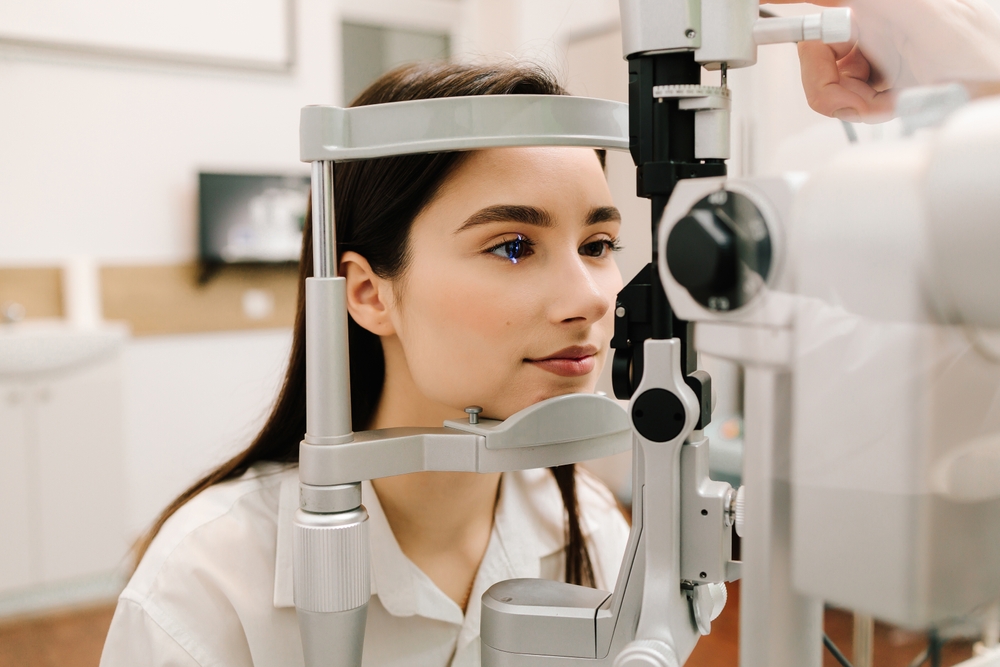If you’ve been researching LASIK surgery to correct your vision, you may have come across information about how corneal thickness can affect candidacy. This is an essential consideration for the safety and success of the procedure, and understanding why corneal thickness matters can help you make an informed decision about your vision correction options.
The good news is that even if your corneas are too thin for traditional LASIK, several alternative procedures can still help you achieve clear vision without the need for glasses or contacts. Keep reading to learn more about the relationship between corneal thickness and LASIK, and the vision correction options available to you based on your individual eye structure.
What is LASIK?

LASIK is a refractive surgery that corrects nearsightedness, farsightedness, and astigmatism. The procedure involves using specialized lasers to permanently reshape the cornea, allowing light to focus correctly on the retina and eliminating the need for corrective visual aids.
During LASIK surgery at Batra Vision, your eye doctor creates a thin flap in the surface of the cornea with a femtosecond laser. This flap is gently lifted to expose the deeper layers of the cornea, where an excimer laser reshapes the tissue according to your specific prescription.
The flap is then repositioned, allowing it to heal naturally without the need for stitches.
What Are the Candidacy Requirements for LASIK?
Not everyone is an ideal candidate for LASIK surgery. Your eye doctor will evaluate several factors during your consultation to determine whether the procedure is right for you.
General candidacy requirements include being at least 18 years old with stable vision for at least one year. You also should have healthy eyes without conditions like glaucoma, cataracts, or severe dry eye syndrome.

However, corneal thickness is one of the most critical factors in determining LASIK candidacy. Your cornea needs to be thick enough to safely create the flap and remove the necessary tissue for vision correction while still maintaining structural integrity. Most surgeons require a minimum corneal thickness of around 500 microns, though the exact requirement depends on your prescription and the amount of tissue that needs to be removed.
During your consultation at Batra Vision Medical Group, your eye doctor will perform a comprehensive eye examination that includes measuring your corneal thickness using specialized instruments. This measurement, combined with your prescription and other eye health factors, helps determine whether LASIK is a safe and suitable option for you.
Why Can’t I Get LASIK with Thin Corneas?
The cornea provides structural support for your eye and maintains the proper shape needed for clear vision. When performing LASIK, your surgeon must preserve enough corneal tissue to maintain this structural integrity and prevent complications.
Creating the corneal flap removes approximately 100 to 160 microns of tissue, depending on the technique used. The laser ablation that corrects your vision removes additional tissue based on your prescription.
After the procedure, you need to have sufficient residual corneal tissue remaining to maintain the stability and health of your eye. If too much corneal tissue is removed, the remaining cornea may become structurally weak.
This can lead to a serious condition called ectasia, where the cornea begins to bulge forward and distort, causing progressive vision problems that are difficult to correct. Ectasia is a rare but serious complication that eye surgeons work carefully to avoid.
This is why surgeons are conservative when evaluating corneal thickness. Even if you desperately want LASIK, a responsible surgeon will not perform the procedure if your corneas don’t meet the safety threshold. The long-term health of your eyes is far more important than taking unnecessary risks.
LASIK Alternatives for Patients with Thin Corneas
Having thin corneas doesn’t mean you’re out of options for vision correction. Several alternative procedures can effectively correct your vision while working with your corneal anatomy:
PRK (Photorefractive Keratectomy)

PRK is often the first alternative eye doctors will recommend for patients with thin corneas. Unlike LASIK, PRK doesn’t require creating a corneal flap.
Instead, your eye surgeon gently removes the thin outer layer of the cornea, called the epithelium, and then uses the laser to reshape the underlying tissue. Because PRK eliminates the need for a flap, it preserves more corneal tissue and can be performed safely on patients who don’t qualify for LASIK.
The procedure takes only a few minutes per eye, and the results are comparable to LASIK once healing is complete. The primary difference lies in the recovery process.
The epithelium needs time to regenerate after PRK, which typically takes three to five days. During this time, you may experience more discomfort than you would with LASIK, and your vision will be blurry.
Most patients take a few days off work to rest. However, once the epithelium has healed, your vision gradually improves over the following weeks and months. The final visual outcomes are generally similar to those of LASIK, making it an excellent option for achieving clear vision.
Epi-LASIK (Epithelial Laser In-Situ Keratomileusis)
Epi-LASIK is similar to PRK, but it uses a specialized instrument to lift the epithelium rather than completely removing it. This technique may promote slightly faster healing compared to traditional PRK, although the recovery period is still longer than that of standard LASIK.
Like PRK, Epi-LASIK is suitable for patients with thin corneas or other conditions that make them less ideal candidates for traditional LASIK surgery. The procedure preserves corneal tissue while still providing effective vision correction.
Refractive Lens Exchange (RLE)

For some patients with thin corneas, particularly those approaching the age when cataracts become a concern, refractive lens exchange (also known as clear lens exchange) may be an appropriate option. RLE involves removing your eye’s natural lens and replacing it with an artificial intraocular lens that corrects your vision.
This procedure doesn’t involve the cornea at all, which means corneal thickness is not a concern for candidacy. RLE can correct a wider range of prescriptions than laser vision correction and also addresses presbyopia, the age-related loss of near vision.
If you’re in your 50s or 60s with thin corneas, RLE might be worth discussing with your eye surgeon.
Finding the Right Vision Correction Solution
If you’ve been told you have thin corneas, don’t be discouraged. The field of refractive surgery offers multiple pathways to clear vision, and advances in technology continue to expand the options available to patients.
The key is finding an experienced refractive surgeon who will thoroughly evaluate your eyes and recommend the safest, most effective procedure for your specific situation. At Batra Vision Medical Group, we’ve performed vision correction surgery for over 10,000 patients using the latest technology and surgical techniques.
During your consultation, we’ll measure your corneal thickness, assess your overall eye health, review your prescription, and discuss your vision goals. If LASIK isn’t suitable for you, we’ll explain which alternative procedures might be better options and help you understand what to expect from each.
If you’re interested in reducing or eliminating your dependence on glasses and contacts, schedule a vision correction consultation at Batra Vision Medical Group in San Leandro, CA, today!

 Follow Us!
Follow Us!